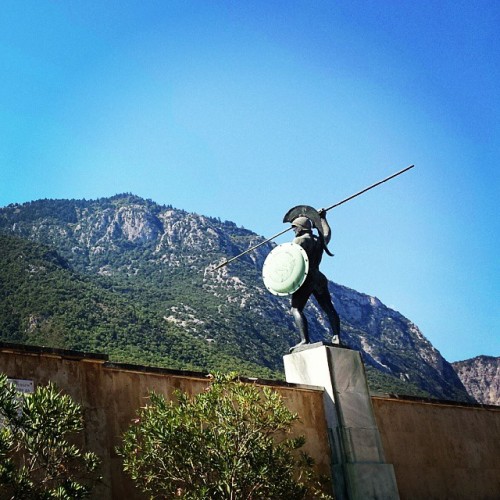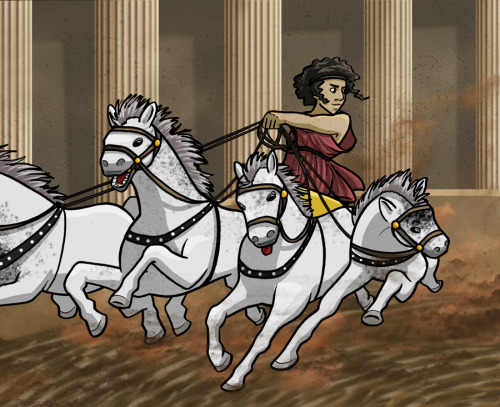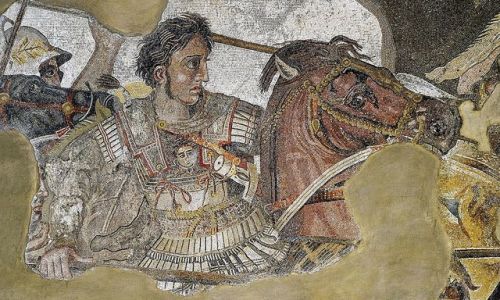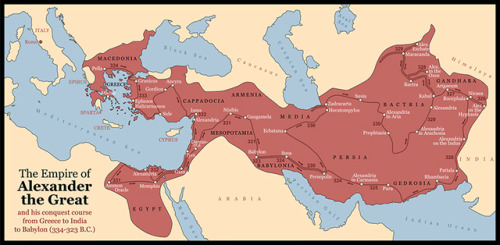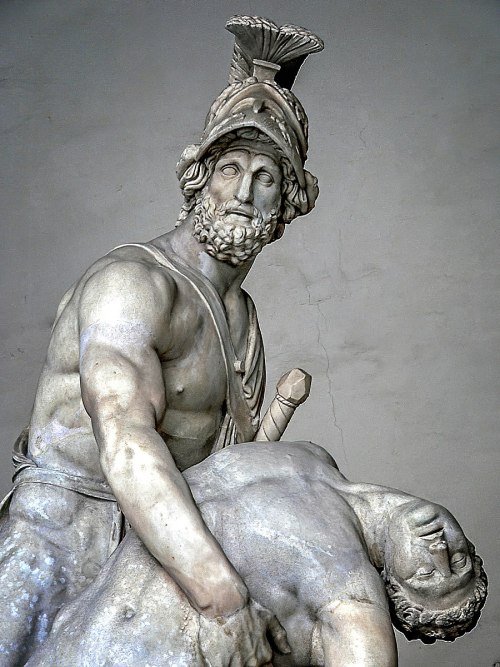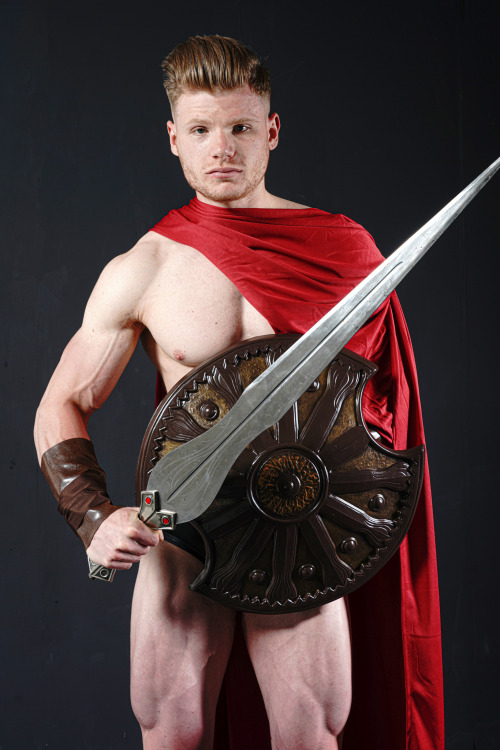#sparta
Signs as ancient Greek cities
Aries: Thebes
Taurus: Argos
Gemini: Rhodes
Cancer: Elis
Leo: Epidaurus
Virgo: Sparta
Libra: Corinth
Scorpio: Syracuse
Sagittarius: Knossos
Capricorn: Eretria
Aquarius: Athens
Pisces: Aegina
Molon Labe my friends ( Leonidas monument at Thermopylae in #Attica Greece). #Greece #greek #Hellas #Instagreece #Sparta #300 #Leonidas #Thermopylae #War #Ελλαδα #Ελλας #MolonLabe #TheRealMolonLabe #Λεονιδας Λεωνίδας #Σπαρτη
Post link
Cynisca (born circa 440 BCE)
Art by Nina Holm (tumblr,deviantart,website)
Although Spartan women were famed for their athleticism, they were not allowed to participate in the original Olympic Games. The competitions were reserved for male athletes, but there was a loophole. The winners of the chariot racing competitions were the owners and trainers of the victorious horses, not the drivers.
In 396 BCE, Cynisca entered her horses in the four horse chariot race and won. She is considered the first female Olympic champion. Cynisca repeated her victory in 392 BCE. Several other women followed her lead and won horse racing events at the ancient Olympic Games.
Cynisca was the daughter of the Spartan king Archidamus II and the sister of Agesilaus II. After her victory, Cynisca commissioned two statues of herself, one at the Temple of Zeus in Olympia and one at the Planistai (plane-tree grove) in Sparta. The Planistai was generally reserved for kings of Sparta and Cynisca is believed to be the first woman honored there. Although neither statue survives, the inscription from the Olympia statue was recorded as:
My fathers and brothers were kings of Sparta
I, Cynisca, having won with a team of swift-footed horses,
Post link
What was Sparta up to during Alexander the Great’s Conquests?
During Alexander the Great’s conquest of what was then the known world, the Spartan’s contributed nothing to the conquest. Rather, when Alexander the Great marched off to war, the Spartan’s refused to participate unless they were leaders of the army. So what was Sparta up to all the while Alexander was conquering the world?
According to legend Alexander’s father, King Philip II sent the following message to Sparta, “You are advised to submit without delay, for if I bring my army on your land, I will destroy your farms, slay your people and raze your city.”
The Spartan’s responded with a single word, “If”.Most likely this exchange didn’t happen, if it did then the Spartan’s were extremely naïve and stupid. Sparta during the times of Alexander was not the same Sparta as was during the Persian Wars or the Peloponnesian Wars. Spartan weapons and tactics had become outdated and quaint. A number of military defeats followed by a few slave revolts had sapped Sparta of it’s power, leaving Sparta a secondary power at best whose glory days were far behind. The Macedonians could have easily conquered Sparta, however, there were many members of the Corinthian League who hated Sparta, thus it was decided it was best to leave Sparta out of the league because of politics.
In 338 BC Agis III became King of the Spartans, and his number one goal was to make Sparta great again. In 333, with Persian military and financial support, Agis was able to raise a 20,000 man army and defeat a small Macedonian army in Greece. Agis and his men then sailed to Crete with the intention of capturing the island and adding it to Spartan territory. With Alexander the Great’s attention focused on conquering the Persian Empire, Agis and his army was easily able to overrun the island and lay siege to it’s largest city, Megalopolis, in 331. Finally the Spartan’s had become enough of a thorn in Alexander’s side that something needed to be done about them. Alexander sent his trusted general Antipater with a force of 40,000 men to deal with the Spartans. The two armies met outside of Megalopolis for a brief battle. The Macedonian’s outnumbered the Spartans 2 to 1, and in the subsequent battle they were easily able to break Spartan lines and send the Spartan army into full retreat, killing around 5,300 Spartans in the process. Agis III died in battle, supposedly staying behind to fight to the death in order to buy his army time to escape.
After the disastrous Battle of Megalopolis, the Spartans were forced to surrender to Macedonia and join the Corinthian League, lest the Macedonians send an army to destroy Sparta. The conquest of Crete was Sparta’s last hurrah, and from here Sparta would continue to decline until conquered by the Romans in 146 BC.
Post link

The selection of the infant Spartans by Giuseppe Diotti 1840. 138.5 × 207.5 cm (54.5 × 81.6 in). Oil on canvas.
In Plutarch’s Life of Lycurgus, he discusses some of the rules Lycurgus is supposed to have set in Spartan society 800 years prior to Plutarch’s day. This post is concerning the rumor of infanticide. Plutarch speaks in the past tense, showing that these were not behaviors practiced during his days, and he begins the story by saying all of this was under dispute and therefore unsubstantiated. Archaeological finds turned up no infant remains at the site believed discussed by Plutarch. Below are quotes from Plutarch and the archaeological finds:
“Concerning Lycurgus the lawgiver, in general, nothing can be said which is not disputed, since indeed there are different accounts of his birth, his travels, his death, and above all, of his work as lawmaker and statesman…
For in the first place, Lycurgus did not regard sons as the peculiar property of their fathers, but rather as the common property of the state.
Offspring was not reared at the will of the father, but was taken and carried by him to a place called Lesche, where the elders of the tribes officially examined the infant, and if it was well-built and sturdy, they ordered the father to rear it, and assigned it one of the nine thousand lots of land; but if it was ill-born and deformed, they sent it to the so‑called Apothetae, a chasm-like place at the foot of Mount Taÿgetus, in the conviction that the life of that which nature had not well equipped at the very beginning for health and strength, was of no advantage either to itself or the state.”
-Plutarch, The Life of Lycurgus
…
“There were still bones in the area, but none from newborns, according to the samples we took from the bottom of the pit” of the foothills of Mount Taygete near present-day Sparta.
“It is probably a myth, the ancient sources of this so-called practice were rare, late and imprecise,” he added.
Meant to attest to the militaristic character of the ancient Spartan people, moralistic historian Plutarch in particular spread the legend during first century AD.
According to Pitsios, the bones studied to date came from the fifth and sixth centuries BC and come from 46 men, confirming the assertion from ancient sources that the Spartans threw prisoners, traitors or criminals into the pit.
The discoveries shine light on an episode during the second war between Sparta and Messene, a fortified city state independent of Sparta, when Spartans defeated the Messenian hero Aristomenes and his 50 warriors, who were all thrown into the pit, headded.“
The majority of human findings in the cave belong to male skeletons of biological age between 18 and 35 years. Only two adult skulls exhibit indications of biological age above 50 years, whereas few skeletal findings from two subadult skeletons indicate biological age between 14 and 17 years. Finally, parts of the frontal bone which must belong to another young person aged approximately 12 years was found. But this case could not be considered proof for the killing of infants in Keadas, since the involvement of older children and adolescents in violent confrontations and warfare is a fact accounted for in modern historical periods as well. Therefore, the improbable scenario of infant killing in Keadas as an application of eugenics seems to be unsubstantiated.”
-taken from Theodoros K. Pitsios’ Research Program of Keadas Cavern and ABC News
Lakonian Black-figure kylix, attributed to the Boreads Painter, ca. 570–565 BCE, currently in Malibu, Getty 85.AE.121.
Bellerophon slaying the Chimaera with Pegasus.
I’ve noticed how rarely Lakonian vase painting is mentioned when discussing Greek pottery, though I find it to be some of the most visually striking and distinctive pottery from Greece! Unlike the Athenians who limit their interior kylix decorations to a smaller tondo within the cup, the Lakonians use up almost all of the interior space of a kylix. This results in these huge images that would come within inches from someones face while they drank from their cups. This is an aspect of Greek pottery that I find to be commonly overlooked–that these objects were meant to be used and and interacted with, not just admired from a distance.
Post link
Menelaus holds the body of Patroclus in this first-century CE Roman copy of a 3rd century BCE Greek original. In the Iliad, the Trojans’ abduction of Menelaus’ wife Helen began the Trojan War. Patroclus was Achilles’ beloved companion, whose death caused Achilles to begin a rage-fueled campaign of revenge.
Post link

